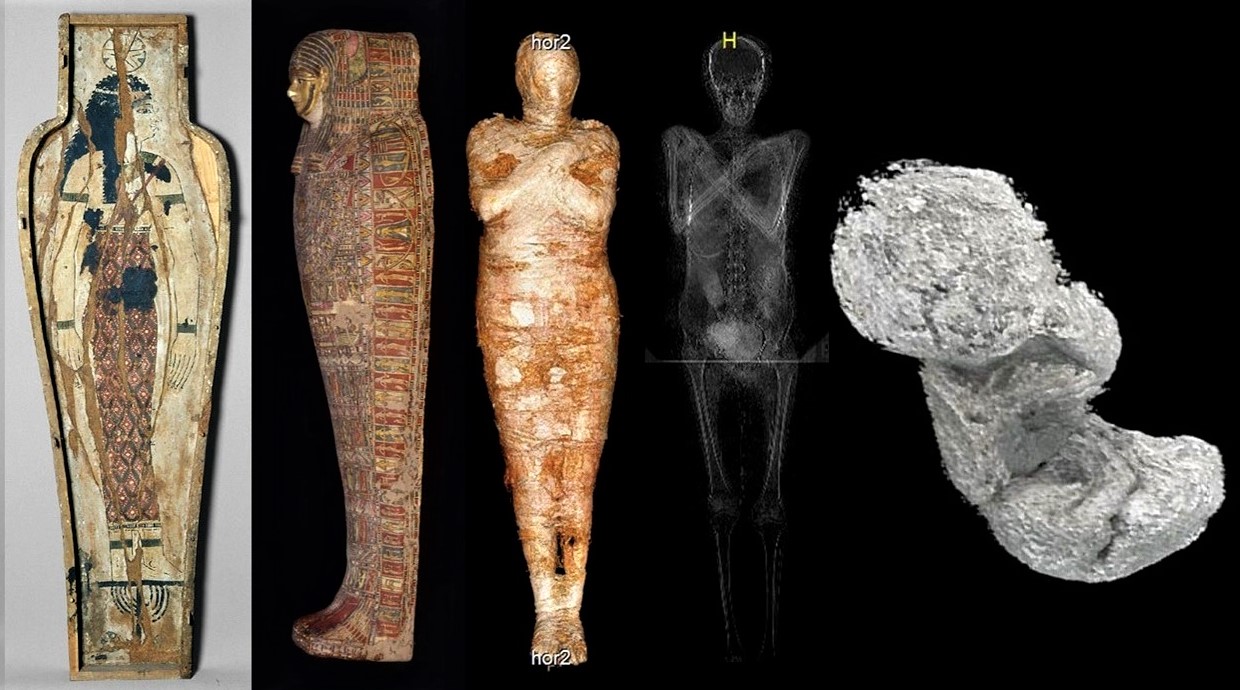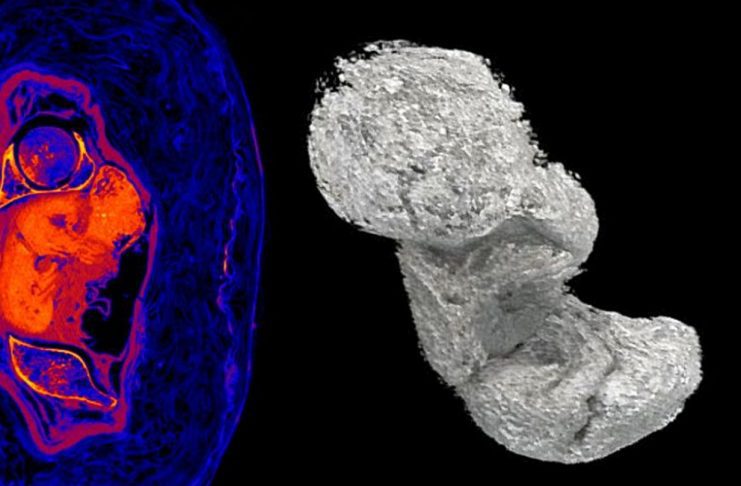 In the sarcophagus found, it was thought there were the remains of an Egyptian priest. The name of another character of the time, a scribe, was later found on this sarcophagus: Hor-Djehuti . The mummy is currently kept in Poland and research has established that the mummy belonged to a young woman of about 20-30 years. The woman died with the baby she was carrying, she is the first pregnant mummy found.
In the sarcophagus found, it was thought there were the remains of an Egyptian priest. The name of another character of the time, a scribe, was later found on this sarcophagus: Hor-Djehuti . The mummy is currently kept in Poland and research has established that the mummy belonged to a young woman of about 20-30 years. The woman died with the baby she was carrying, she is the first pregnant mummy found.
A study has recently been published which analyzes the techniques used for the correct conservation of about 2000 years. The woman had long wavy hair, lived in the first century AD in Thebes, along the Nile, near the modern cities of Karnak and Luxor , not to be confused with the Greek Thebes. She was part of the richest society in the area, given the mode used for mummification.
This sarcophagus was bought by Jan Wężyk-Rudzki and in December 1826, later given to the University of Warsaw as a donation from Count Stanisław Kostka Potocki.
Even if a male name was reported on the sarcophagus, a first analysis had already revealed the lack of the male organ, later more detailed techniques led to the discovery of the young woman . Finally the child ‘s body was discovered and also the ways in which he was mummified.
 By measuring the size of the fetus, it was possible to trace the fact that the woman was 28 weeks pregnant, therefore she was in the seventh month of pregnancy. ” For unknown reasons, the fetus was not removed by the embalmers, but it was not possible to determine its sex, ” stressed Wojciech Ejsmond , a scholar at the Institute of Mediterranean and Oriental Cultures of the Polish Academy of Sciences. « The discovery opens new horizons on techniques and still unknown aspects of Egyptian burials».
By measuring the size of the fetus, it was possible to trace the fact that the woman was 28 weeks pregnant, therefore she was in the seventh month of pregnancy. ” For unknown reasons, the fetus was not removed by the embalmers, but it was not possible to determine its sex, ” stressed Wojciech Ejsmond , a scholar at the Institute of Mediterranean and Oriental Cultures of the Polish Academy of Sciences. « The discovery opens new horizons on techniques and still unknown aspects of Egyptian burials».
In one of the latest studies published in the “Journal of Archaeological Science” , Ożarek-Szilke, co-director of the Warsaw Mummy Project , pointed out that the deceased had been covered in natron to dry out body fluids. It is a natural mixture containing sodium carbonate decahydrate and approximately 17% sodium bicarbonate, plus sodium chloride and sodium sulfate. Inside the young woman ‘s body , the transition from an alkaline to an acidic environment caused minerals to be leached from the fetal bones, which began to dry out and mineralize.









